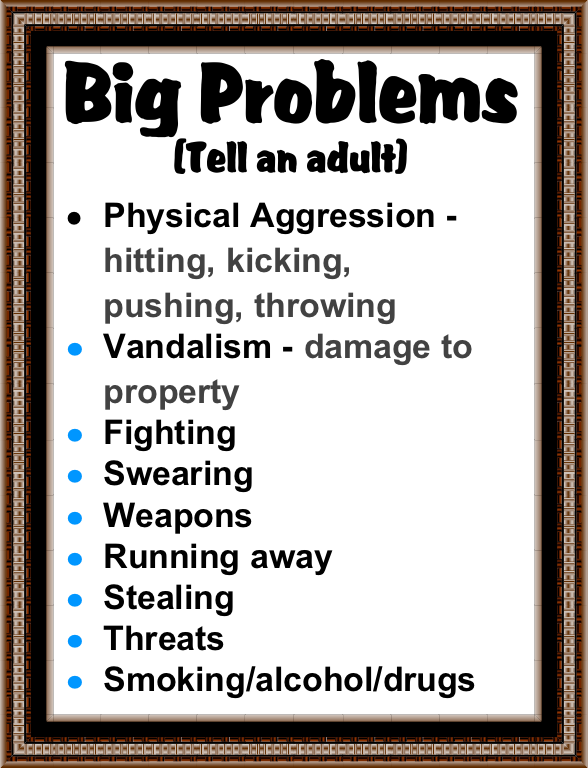Cubber’s Choice
At Notre Dame Elementary, we have implemented the Cubber’s Choice program This program empowers children to use the skills of conflict management in school, in the community and at home.
Cubber’s Choice is unique in two ways:
It builds a foundation for children to discriminate between manageable, “kid-size” problems and those that require adult intervention.
It provides a cognitive structure of nine tangible skills that can be used to solve “small” problems.
Cubber’s Choice is predicated on the assumption that annoying, “small” problems can usually be solved by students, but that “big” problems (things that make a child feel threatened or frightened) must be shared with an adult.
The goals of the program are to:
Empower young people with the ability to determine their own behaviour, encouraging an internal locus of control and appropriate problem ownership. Statements such as “He made me do it!” and “She did it first!” become obsolete as students become accountable for their own choices. The Cubber’s Choice program is highly integrated into our ongoing Moral Intelligence Program and our Catholic faith. All three programs intertwine together to allow students to practice and own the skills necessary to solving problems.
Reduce tattling through a proactive, preventative approach that keeps small problems from escalating and prevents negative attention-getting mechanisms from occurring..
Systematize expectations of student behaviour and provides consistency.
Provide a cognitive structure for discriminating between “small” problems young people can resolve.
Increase feelings of personal competence as young people successfully solve conflicts, both within structured lessons and within their own lives.
Develop an important link between home and school as the Cubber’s Choice program is shared with parents.
Give young people and important conflict resolution tool they can use when adults are not available or readily accessible. These situations might include riding bikes around the neighbourhood, waiting at the bus stop or playing games in the far corner of school grounds.
The material is first presented at a school assembly as part of our moral intelligence program. Follow up occurs during daily skill practice at the end of announcements. Within the core program, students are first taught to discriminate between “big” problems that must be shared with an adult, and “small” problems that they can resolve.
After mastering this distinction, each of the nine skills are taught to the students. For example, specific strategies for “MAKE A DEAL” are taught and practiced, including how to flip a coin, how to pick a number from one to ten, how to compromise and make a trade-off, etc.
The program encourages students to try two choices from the “chart.” If the “small” problem persists, they are told that adult intervention is warranted. Because terms such as “Ignore” are linguistic in nature, each skill is reduced to distinct operational skills, so young learners understand the meaning and function of each behaviour.
Auditory, visual and kinesthetic learning activities are provided, as are all levels of learning mastery, from simple identification through synthesis. Throughout the daily skill practice, two important messages
are presented: every student can make good choices and every student can make the choice that fits them best.
Because of cultural or personality differences, it is not mandated that specific “small” problems must be handled in exactly the same way by all students. Instead, students are allowed to make individual choices … some students might use a more assertive approach (TELL THEM TO STOP), while others may select a less assertive choice (IGNORE).
Through our program, students will:
Be taught to decide when adult intervention is needed.
Be taught when to attempt the resolutions of conflict themselves.
Be taught a repertoire of nine concrete and viable conflict management skills.
Be provided with a safe and non-threatening avenue to practice and internalize their newly developed problem-solving skills.
Parents are encouraged to print out the posters below and adopt these choices in your home as a way of dealing with conflict. I have had many parents adopt this program at home with excellent results. Sibling relationships improved and tattling was virtually eliminated. If you would like more information about how you can use this program in your home, please do not hesitate to contact myself, Mrs. Val Hanson, at the school.



